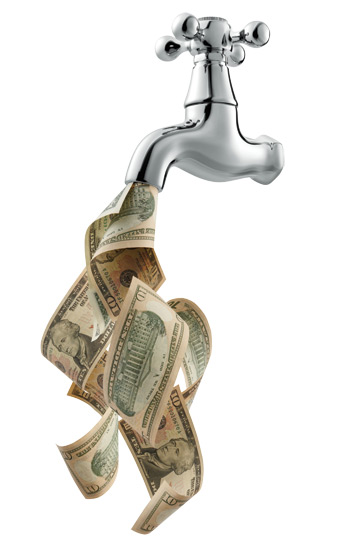
What your financial statements tell you – and why you should listen
As businesses face yet another season of tepid market demand and tight credit, having access to accurate and timely information about your company’s financial health will be more important than ever this year.
Whether on a monthly, quarterly or annual basis, business owners can turn to a trio of financial measuring tools to stay on top of how the company is doing, where it’s going, and whether there are any trouble spots that need to be addressed before any long-term damage occurs.
Taking a broader, deeper perspective
So, what kind of information should you be getting, and how often? At a minimum, your end-of-the-year financial statements will give you a detailed picture of the financial health of your company over the past year. But it’s important to dig deeper.
Run a comparison of your most recent year against how the company has done over the last 3 to 5 years to uncover broader trends. Then analyze how you are doing in comparison to others in the industry. These benchmarks will give you valuable insights into how your business is actually doing, and provide deeper context to your planning and decision-making.
Better yet, review your company’s performance on a monthly or quarterly basis. More frequent information can give you more time to think about – and react to – worrisome trends that may need correcting.
Tip: A particularly helpful tool is a weekly flash report – a simple, one-page snapshot of cash on hand, receivables, payables, line of credit balance, and cash flow needs for the next week. Your bookkeeper should be able to compile this fairly easily.
The idea is to collect and review information at a pace that makes for better decision-making. Armed with the right information and gathered in near real-time, you will have a more sensitive barometer with which to prepare for any storms that may be forming on the horizon.
Your company’s three-legged stool
Most companies use three distinct reporting tools to measure and monitor their financial health – the profit and loss statement (P&L), the cash flow statement and the balance sheet.
Imagine your business as a three-legged stool. The seat represents all the working parts of your business. The relative health of your business is reflected by the three financial reporting mechanisms or the “legs.” These legs support the business by performing at high levels.
Many turn to the P &L statement first, because it answers the question, “Did I make money?” The statement of cash flow is usually the next most interesting to the owner, because it answers the question, “How much cash did my company produce?”
But in determining the true financial health of your company, the most important of the three legs is the balance sheet. This is the tool that measures how well a company can weather a downturn in business. It is the information on which banks and other financial institutions make some of their important decisions about lending and bonding. And as such, the owner’s attention needs to be focused on creating a strong, low leveraged, balance sheet.
Working toward a positive bottom line
This is not to say that the P&L is a trivial document. Obviously, companies need to grow revenue, and need to ensure that they are accurately determining the “cost of revenues” to produce a profit from their sales. Accounting software systems like Peachtree and QuickBooks can be possible solutions for this process.
If your company bids for work, it is especially important to correctly calculate direct costs in the bidding process in times like these when margins continue to be under pressure.
Tip: Always have a target range in mind for your overhead. This is where industry benchmarks play an important role. Your accountant should have access to benchmark data for your particular industry.
Cash flow as a measure of financial strength
It’s been said that plenty of profitable companies have gone bankrupt. Why? Because businesses don’t pay their bills with profits – they pay their bills with cash.
It’s important that owners read and understand the statement of cash flow, especially the section that reports cash flow provided by operating activities. That number indicates the true amount of cash profit the company is producing, and the resources it has on hand to pay the company’s obligations – inventory, rent, payroll, benefits, unions, debt service, and the like.
Do you know your break-even cash flow? Remarkably, some owners don’t know the amount of cash they need to collect every week in order to pay their bills. The ratio “days-of-cash” is good start to determining how much cash you need to have on hand at any given time during the year.
This number can also be compared to industry benchmarks. Depending on your industry, more than 20 days of cash is a good target. Anything below this number begins to put pressure on receivables collections, or may force you to begin selling inventory at lower prices. Both these scenarios will ultimately impact the company’s ability to fund its day-to-day operations.
Tip: Having a working capital line of credit is one way to weather short-term disruptions in cash flow. It’s usually best to set up this arrangement with your lender before you actually need the money. This added safety net will really come in handy if the company hits a rough patch.
A strong balance sheet can weather the storm
As important as these two documents are, it is the balance sheet that serves as the cornerstone of your financial statements. This is the instrument that answers the question, among other things, how leveraged is my company? The ratio “debt to equity” is the key barometer that measures leverage.
A ratio of under 2-to-1 usually indicates that a company has enough resources to withstand a downturn in business. A higher ratio shows that the company is more highly leveraged, and that it may be operating under growing financial stress.
Even if a company shows a net loss on its P&L, or if it reports a negative cash flow on its year-end cash flow statement, it can still continue to operate provided it has a strong balance sheet. A weak balance sheet makes it more difficult to continue because there will likely be fewer resources available to fund operations, pay bills, and make the kind of investments necessary to return to profitability.
Generally, if your balance sheet is strong, your lender will be less likely to pull your line of credit or send you through the work-out process. In fact, it is one of the factors that has allowed healthier (i.e., less-leveraged) companies to absorb the downturn in business these past four years.
And as these same companies prepare themselves for improving market conditions, a strong balance sheet will be a key in securing the resources to fund their future growth.



